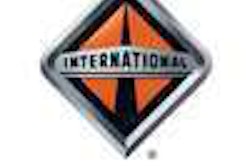By using off-the-shelf technology, owners of long-range tractor-trailers could reduce fuel consumption per unit up to 12 percent annually — or 2,000 gallons — while reducing emissions and realizing a profit of as much as $30,000 per truck over the first eight years of ownership, according to a study released Thursday, Oct. 23, by the Union of Concerned Scientists.
Retrofitting used tractors and trailers as old as 12 years with a full package of fuel-saving technologies still could produce unidentified net savings for individual owners, the report said. For fleet owners with an average of 2.5 trailers per tractor, a full technology package could yield savings for equipment up to 6 years old.
The report used an average fuel price of $3.24 over the past two years and estimated that tractor-trailers ran about 130,000 miles annually and achieved fuel economy of 6 to 6.5 mpg.
“In these economic times, we need these strategies to protect our environment and boost the economy at the same time,” says Don Anair, senior analyst in the UCS clean vehicles program and author of the report by the science-based nonprofit group.
A full fuel-efficient technology package could include aerodynamic trucks with a sloped hood and full roof fairing, wide-single tires, trailer side skirts or side panels that cover gaps between wheels and rear-trailer fairings, the report said.
The UCS report was released a day before today’s planned Oct. 24 announcement by the California Air Resources Board of two new draft rules for trucks registered in the state and trucks that drive in the state. Those rules focus on smog-forming emissions and particulate matter and on global-warming emissions such as nitrogen oxides. Trucks account for 7 percent of smog-forming emissions and one-third of NOx emissions in California, Anair says. CARB is expected to vote on the regulations at a December meeting after a public comment period.
“California regulators are hoping to make some of these technologies standard equipment on tractors and trailers by implementing performance requirements, both for new and used equipment,” Anair says. “If these requirements are adopted, they could save the trucking industry billions in fuel costs and save consumers on shipping costs and accelerate the state’s green-tech economy.”
The cost of spec’ing or retrofitting fuel-saving equipment is a major problem for many truck owners. Anair acknowledges that the economy is a primary issue these days, but says companies “are looking for good investments. Our analysis shows that using a full package of this technology, the investment will pay back in as little as two years or less.”
Andrew Smith, president and chief executive officer of Advanced Transit Dynamics, a San Francisco-based maker of rear-trailer fairings, says he is working with a small trucking company with 40 trailers and that it could save $300,000 a year by using trailer aerodynamic technologies. “That is potentially the profit margin for that company,” says Smith, whose company was invited by UCS to take part in the report’s presentation.
Smith says his company has spent the past two years developing trailer-tail technology, which can reduce drag by more than 5 percent and a potential fuel savings of $2 billion annually for the long-haul trucking industry. He says his company is working with six fleets and anticipates rolling out several thousand units in 2009.
The report was funded primarily by the Energy Foundation, a San Francisco-based organization of donors who provide grants to address energy problems.











